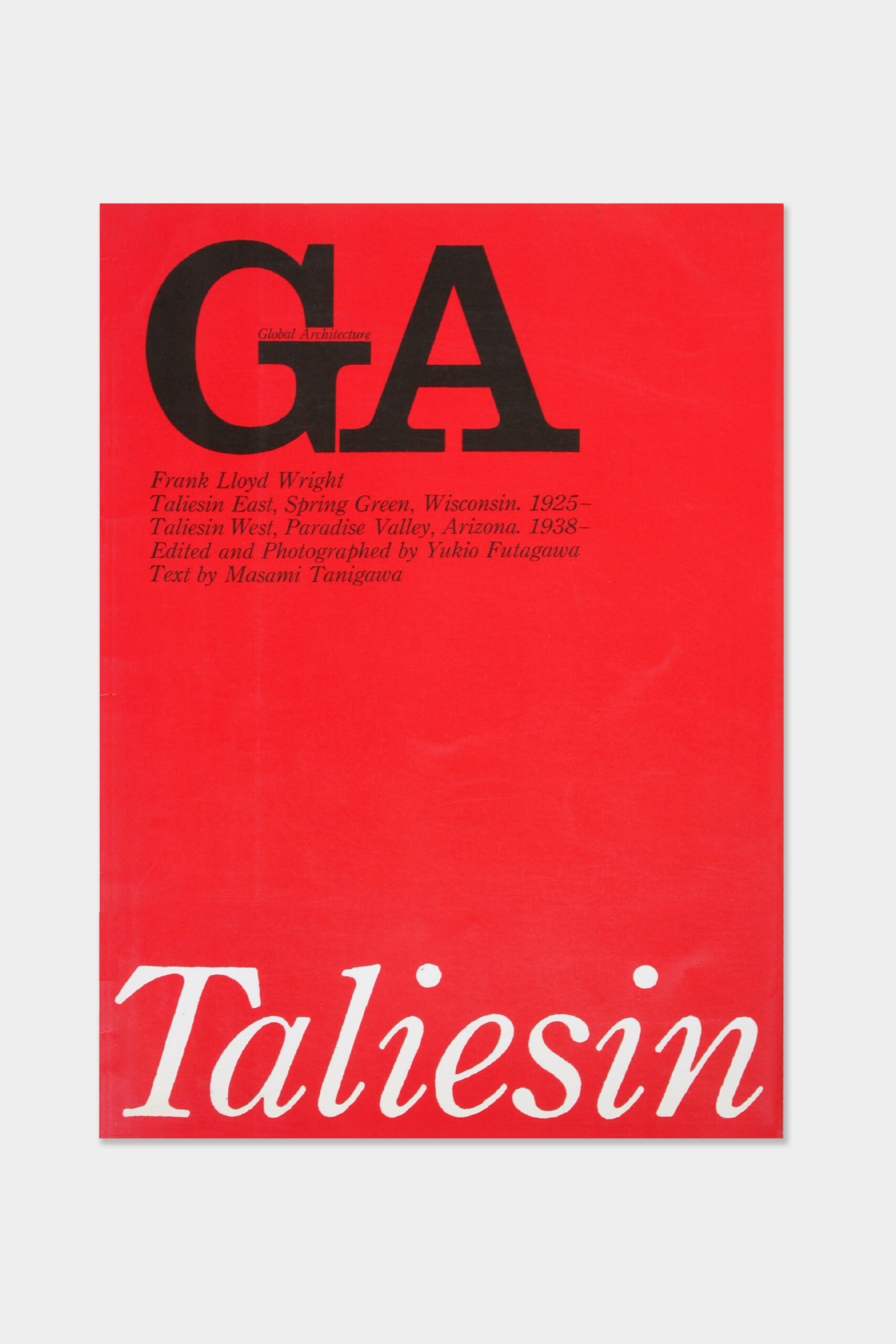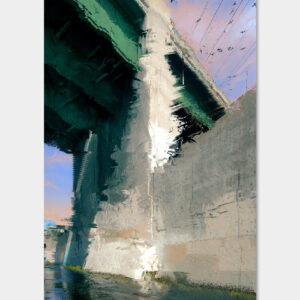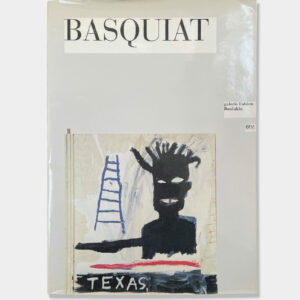Description
GA magazine n°15: Frank Lloyd Wright – Taliesin East, Spring Green, Wisconsin, 1925 – Taliesin West, Paradise Valley, Arizona, 1938
48 pages with both color and black&white amazing photographs by Yukio Futagawa.
Text by Masami Tanigawa.
This special issue of GA is entirely dedicated to Frank Lloyd Wright’s Taliesin East and Taliesin West.
First published in 1976 by A.D.A. EDITA Tokyo. This is a 1985 edition.
Bilingual English/Japanese
25.8cm X 36.4cm (10 3/16″ x 14 5/16″)
Weight: approx 470g
(ISBN: 4-87140-015-8 C1352).
This book is out of print.
Very good condition, with very minor damage at the lower left corner of the back cover (see the last photo), no faded areas, no folds, and rarely opened.
Having purchased several hundred acres of land in the then rural foothills of northeast Scottsdale, Wright began to conceive of a desert utopia comprised of low-slung buildings designed to reflect the sweeping expansiveness of the desert. Always in favor of local materials, Wright would construct Taliesin West largely of “desert masonry”: local rock set in wooden forms and bound by a mixture of cement and desert sand. In so doing, Wright hoped to preserve as much of the desert environment as possible by embedding his structures within the landscape. Canvas roofs bathe the interior spaces with light, while redwood beams provide Wright’s favored red accents. Over the years, the complex was continually altered and expanded, eventually including a drafting studio, dining facilities, three theaters, a workshop, Wright’s office and private living quarters, and residences for apprentices and staff. Each building is connected through a series of walkways, terraces, pools and gardens. Wright designed all of the interior furniture and decorations, the majority of which were made on site by the apprentices.
Wright would continue to spend winter in Arizona until his death in 1959. As the buildings of Taliesin West took on greater permanence, steel and fiberglass replaced the less durable materials. Life in the desert was active. The Fellowship’s hands-on architectural education was complimented by an active calendar of lectures, evening entertainment, concerts and theatrical performances. Taliesin West continues to serve as the vibrant home of both the Frank Lloyd Wright Foundation carrying on many of the Fellowship’s traditions. A small number of the Legacy Fellows who lived and worked with Wright continue to live on the grounds. (source: https://franklloydwright.org/taliesin-west/)
Other GA (Global Architecture) publication on The Art Motion:
GA magazine n°40: Frank Lloyd Wright’s Pfeiffer Chapel & Beth Sholom Synagogue







